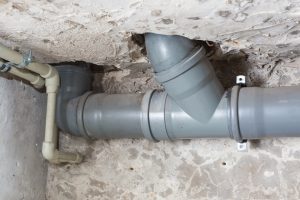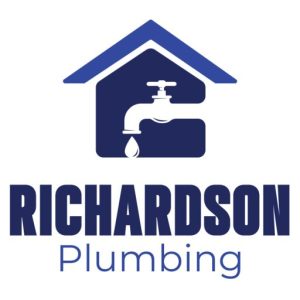
The Importance of Proper Drain Installation
Plumbing drains are the unsung heroes of our built environments, quietly yet tirelessly removing used water, waste, and other unwanted materials from our homes and businesses. Proper drain installation is crucial for ensuring the long-term efficiency and reliability of this vital component of the plumbing system.
Compliance with Plumbing Codes
One of the primary considerations in drain installation is adherence to local plumbing codes and regulations. These guidelines, such as the Uniform Plumbing Code (UPC) or the International Plumbing Code (IPC), address various aspects of drain design, materials, and installation techniques. Compliance with these standards is not only a legal requirement but also ensures the safety and functionality of the drainage system.
Optimal Pipe Sizing and Placement
The size and placement of drain pipes are critical factors in achieving efficient water flow and preventing clogs or backups. Plumbers must carefully calculate the expected water volume and flow rates to determine the appropriate pipe diameters, gradients, and routing. Improper pipe sizing or improper placement can lead to issues like slow drainage, standing water, or even structural damage.
Integration with the Broader Plumbing System
Drain installation is not a standalone process; it must be seamlessly integrated with the broader plumbing system, including the water supply, sanitary drainage, and ventilation components. Plumbers must ensure that the new drain installation seamlessly connects to the existing network, maintaining the overall integrity and functionality of the entire plumbing infrastructure.
The Anatomy of a Plumbing Drain System
At the core of every plumbing system lies the drainage network, responsible for the efficient removal of wastewater and other unwanted liquids. Understanding the key components and their roles is essential for effective drain installation and repair.
Water Supply System
The water supply system delivers clean, potable water to the various fixtures and appliances within a building. This system, often consisting of a main water line, branch lines, and various valves and regulators, provides the necessary pressure and flow to ensure a consistent water supply.
Drainage and Waste Removal
The drainage system, on the other hand, is responsible for collecting and transporting used water, waste, and other liquids away from the building. This network of pipes, traps, and vents ensures that wastewater is safely and hygienically removed, preventing backups and potential health hazards.
Ventilation System
Integral to the drainage network is the ventilation system, which regulates the air pressure within the pipes. Vent pipes allow air to flow freely, ensuring that water and waste can move without obstruction, while also preventing the buildup of harmful sewer gases.
Specialized Components
Depending on the complexity of the plumbing system, additional specialized components may be incorporated, such as backflow prevention devices, grease traps, and sump pumps. These elements help maintain water quality, manage waste disposal, and mitigate the risk of environmental contamination.
The Drain Installation Process
Installing a new drain or replacing an existing one is a multi-step process that requires the expertise of licensed and experienced plumbers. Let’s explore the key stages involved in drain installation:
1. Design and Planning
The first step in the drain installation process is a thorough design and planning phase. Plumbers will assess the existing plumbing infrastructure, determine the appropriate drain size and placement, and develop a detailed installation plan that complies with local codes and regulations.
2. Obtaining Permits
Before any work can commence, the necessary permits must be obtained from local authorities. This process typically involves submitting detailed plans and specifications for review, ensuring that the proposed installation meets all legal and safety requirements.
3. Excavation and Pipe Laying
For new construction or major renovations, the drain installation process often begins with the excavation and laying of underground pipes. Plumbers must ensure that these pipes are properly aligned, sloped, and secured to facilitate the smooth flow of wastewater.
4. Rough-In Stage
Once the building’s structure is in place, plumbers move on to the rough-in stage, which involves installing the pipes within the walls and floors. This framework sets the stage for the later installation of fixtures and appliances, with careful consideration given to the building’s layout and design.
5. Connecting to the Main Sewer or Septic System
The next critical step is connecting the internal drainage network to the municipal sewer system or a private septic tank. Plumbers must ensure a secure and compliant connection to prevent leaks, backups, or environmental contamination.
6. Fixture Installation
With the underlying plumbing infrastructure in place, plumbers can now install the various fixtures, such as sinks, toilets, and showers. Each fixture is carefully fitted and tested to ensure proper water flow and the absence of leaks.
7. Testing and Inspection
The final stage of the drain installation process involves thorough testing and inspection. Plumbers will check the entire system for any leaks or other issues, and local building inspectors may also conduct a review to ensure compliance with all relevant codes and standards.
Drain Repair and Maintenance
Even the most well-designed and installed drainage systems can encounter problems over time. Proper maintenance and timely repairs are essential to ensure the continued efficient operation of your plumbing drains.
Diagnosing Drain Issues
The first step in addressing any drain-related problem is to accurately diagnose the underlying cause. Plumbers may employ various tools and techniques, such as video inspections and drain snakes, to identify the source of the issue, whether it’s a clog, pipe damage, or a more complex sewer line problem.
Unclogging Drains
One of the most common drain-related issues is clogging, caused by the accumulation of hair, food particles, soap scum, or other debris. Plumbers can use a variety of methods to clear these blockages, including high-pressure water jets, powered drain augers, and even manual removal techniques.
Pipe Cleaning and Replacement
In cases where the drain issue is not caused by a simple clog, plumbers may need to clean or replace the affected pipes. This can involve the use of specialized pipe cleaning tools, as well as the excavation and replacement of damaged or corroded sections of the drainage system.
Sewer Line Repairs
The most complex and challenging drain repair scenarios involve issues with the sewer line, such as damage from tree roots, collapsed pipes, or severe corrosion. These repairs often require extensive excavation and the replacement of the affected sewer line segments.
Preventative Maintenance
To avoid costly and disruptive drain repairs, it’s essential to implement a regular preventative maintenance routine. This may include measures such as installing drain screens, regularly cleaning drains, and monitoring the system for any signs of wear or deterioration.
Residential vs. Commercial Drain Systems
While the fundamental principles of drain installation and repair apply to both residential and commercial settings, there are some key differences in the scale, complexity, and demands placed on these systems.
Residential Drain Systems
Residential drain systems are typically less complex, serving the needs of single-family or multi-family dwellings with a relatively consistent daily water usage pattern. These systems are designed to handle moderate use, with a limited number of fixtures like sinks, toilets, and showers.
Commercial Drain Systems
Commercial drain systems, found in office buildings, shopping centers, schools, and industrial facilities, are more complex due to the higher volume of usage and the variety of requirements. These systems must accommodate heavy, consistent water usage and manage significant waste disposal needs, often including larger pipes, more sophisticated water heating and boiler systems, and extensive sewage and drainage networks.
Addressing Unique Drain Installation Challenges
While the general drain installation process follows a well-established sequence, there are instances where plumbers must navigate unique challenges and employ specialized techniques to ensure a successful outcome.
Tying into Existing Drain Lines
One such challenge arises when connecting a new drain line to an existing, fixed-in-place drainage system. In these cases, plumbers may need to use specialized fittings, such as solvent-weld slip couplings or rubber couplings, to create a secure and compliant connection without disrupting the existing piping.
Dealing with Confined Spaces
In some situations, such as basement or attic installations, plumbers may need to work in cramped or confined spaces. This requires careful planning, the use of specialized tools, and a meticulous approach to ensure the successful installation of the new drain components.
Handling Specialized Drainage Needs
Certain commercial or industrial facilities may have unique drainage requirements, such as the need for grease traps, oil-water separators, or specialized waste disposal systems. Plumbers must be equipped to design, install, and maintain these specialized drainage components to meet the specific needs of the application.
The Importance of Professional Drain Installation and Repair
While the temptation to tackle drain-related issues as a DIY project may be strong, the complexities and potential risks involved in plumbing work make it a task best left to licensed and experienced professionals.
Compliance with Codes and Regulations
Proper drain installation and repair require a deep understanding of local plumbing codes and regulations. Failure to adhere to these standards can result in legal issues, safety hazards, and potentially costly repairs down the line.
Expertise and Problem-Solving Skills
Plumbers bring a wealth of specialized knowledge and problem-solving skills to the table. They can accurately diagnose the root cause of drain issues, select the appropriate materials and techniques, and implement effective solutions to restore the system’s functionality.
Liability and Warranty Coverage
When you work with a professional plumbing contractor, you have the added benefit of liability coverage and warranty protection. This means that if any issues arise due to the work performed, the contractor is responsible for addressing them, providing you with peace of mind.
Efficient and Cost-Effective Solutions
Attempting DIY drain repairs can often lead to further complications and more extensive (and expensive) work. Professional plumbers, on the other hand, can efficiently identify and address the problem, minimizing disruption and ensuring a cost-effective solution.
Plumbing drains are the unsung heroes of our built environments, quietly yet tirelessly removing used water, waste, and other unwanted materials from our homes and businesses. Proper drain installation and timely repairs are essential for maintaining the health, hygiene, and functionality of these critical components.
Contact us (859-371-2239) for a free consultation!
—
 About Richardson Plumbing
About Richardson Plumbing
Richardson Plumbing offers a wide range of residential and commercial plumbing services using seasoned professionals and the highest quality parts and equipment available. We continually strive to exceed expectations by ensuring that each client receives prompt, outstanding service from our entire organization. Richardson Plumbing provides free consultations that explain all of your available options, so you can choose the scope of work that’s right for your home or business. When you have problems that just can’t wait until tomorrow, we can provide 24 hour emergency services.
> Learn More

 About Richardson Plumbing
About Richardson Plumbing